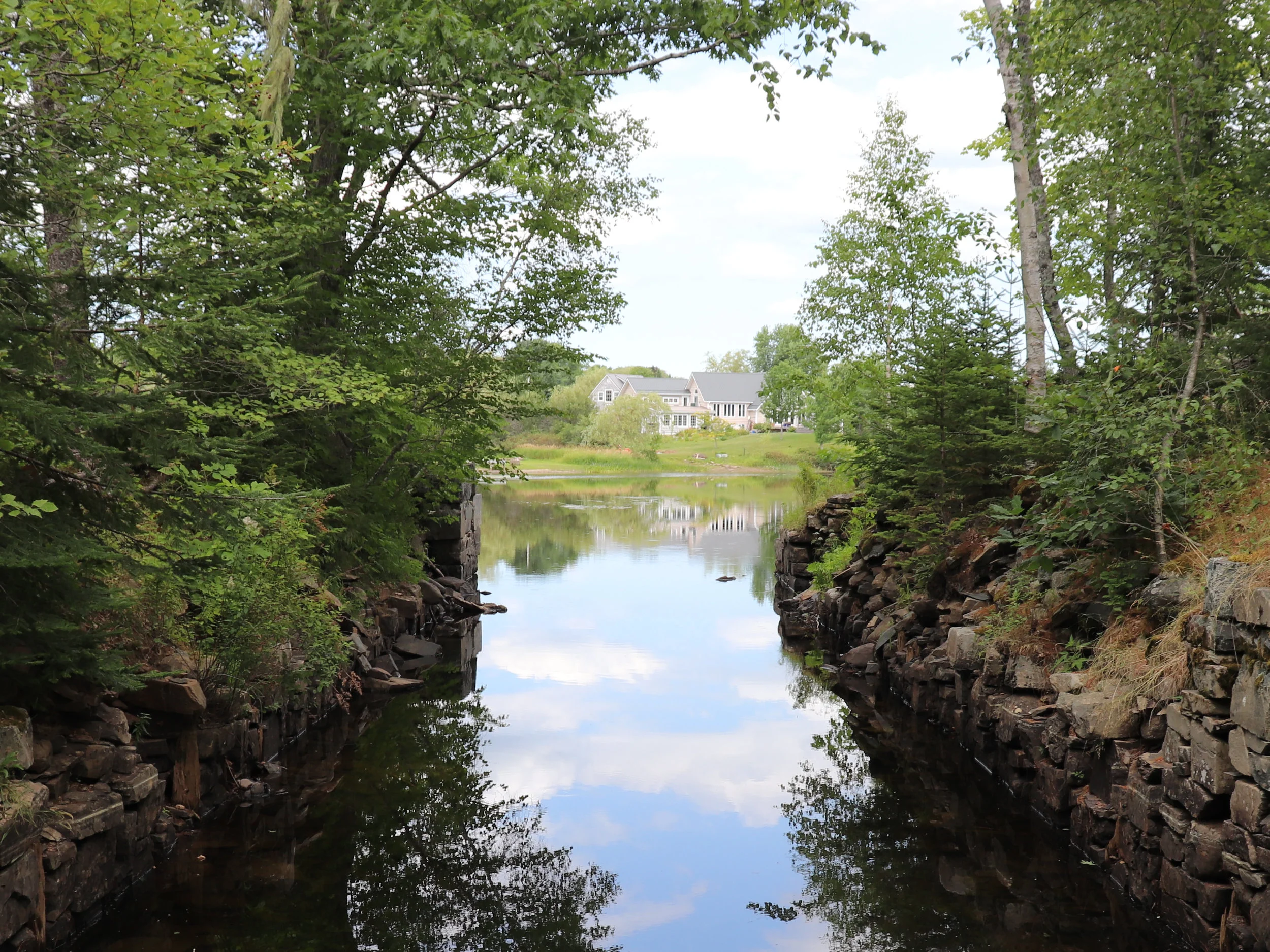A New Life for the Shubenacadie Canal
After its effective closure in 1871, the Shubenacadie Canal sat largely neglected for almost a century, remembered only as one of the most notorious construction projects of 19th-century Nova Scotia.
This started to change during the economic boom that followed World War II. In 1962, the Dartmouth Chamber of Commerce ordered a study on the condition of the Shubenacadie Canal to evaluate it as a recreational and historical resource. Two years later, a group of interested volunteers formed the Shubenacadie Canal Association.
Throughout the 1960s and 1970s, interest grew in preserving and restoring the canal. A federal government study in 1973 explored the possibility of restoring it to operational status, but this plan was unfortunately deemed too expensive at the time. Meanwhile, the City of Dartmouth made a series of land acquisitions along the canal route in Port Wallace, culminating in a formal proposal to create what is now Shubie Park in 1977. This proposal included plans to restore Lock 2 and Lock 3 and to build an interpretive centre at the park dedicated to the history of the Shubenacadie Canal.
The Fairbanks Centre at Shubie Park, headquarters of the Shubenacadie Canal Commission.
In 1980, the City of Dartmouth created the first incarnation of the Shubenacadie Canal Commission to oversee its plans to preserve and restore the Dartmouth portions of the waterway. The new commission immediately showed its value by successfully convincing the provincial government to relocate a planned highway bypass from what is now Shubie Park to a less sensitive location further north.
In 1986, the current Shubenacadie Canal Commission was founded by an act of the provincial legislature of Nova Scotia, replacing the previous municipal commission. This new organization now had a provincial mandate that covered the entire Shubenacadie Canal Waterway from Dartmouth to Maitland. In 1987, the Fairbanks Centre opened in Shubie Park, providing both a central interpretive hub for the history of the canal and an operational headquarters for the Shubenacadie Canal Commission.
Since the 1980s, the Shubenacadie Canal Commission has worked with private donors and all levels of government to preserve, promote, and restore the natural and historical heritage of the Shubenacadie Canal Waterway. It has been involved with the modern development of Shubie Park, the full restoration of Lock 5, the partial restoration of several other locks on the waterway, and the reconstruction of the Dartmouth marine railway. During each of these construction and restoration projects, archaeological excavations have been carried out to recover and preserve artifacts left behind by canal workers, many of which are on display at the Fairbanks Centre. Interpretive panels now line the canal route, informing visitors about what existed at those sites more than a century prior. The Commission also works to promote recreational opportunities along the waterway, both through its own initiative and by coordinating the efforts of independent stakeholders.
If you want to be a part of the next chapter in the history of the Shubenacadie Canal, consider making a donation to the Shubenacadie Canal Commission or offering yourself as a volunteer.

